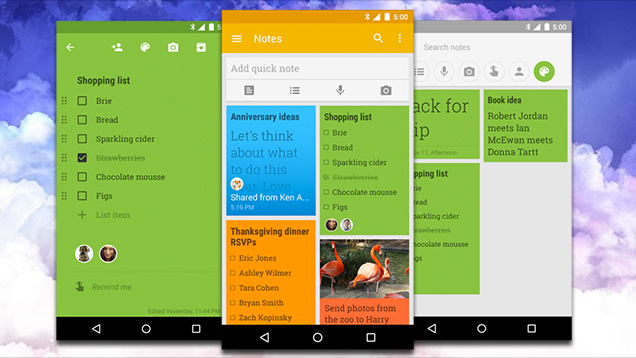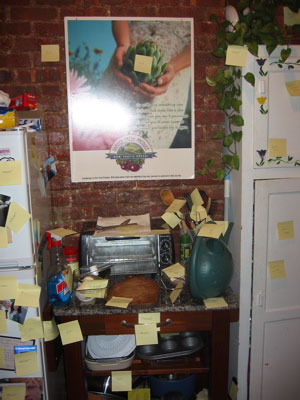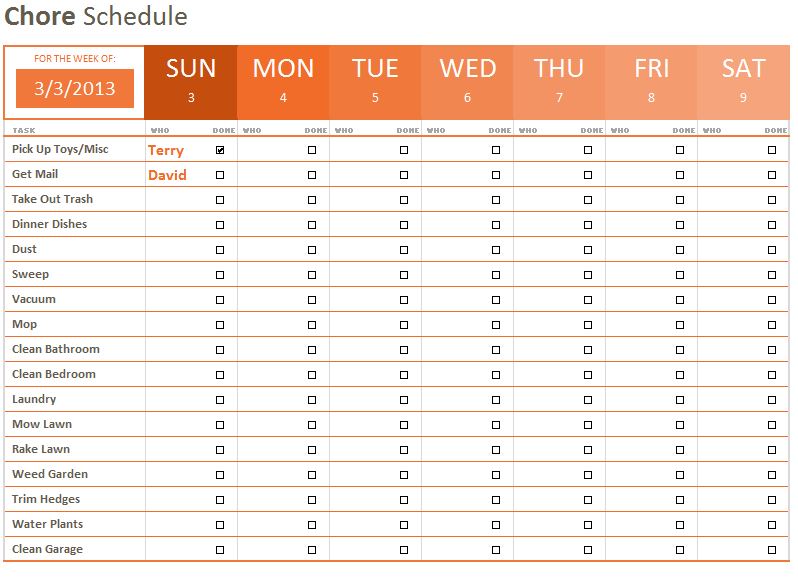In his book The Checklist Manifesto, Boston based surgeon Dr. Atul Gawande mentions that failures occur due to the following reasons. The top three of them are:
- Lack of knowledge
- Lack of proficiency despite the knowledge
- Completely unforeseen circumstances.
But more than 90% of his best-selling selling book highlights the failure of the fourth kind. You may have complete knowledge about a subject, you may have gained enough fluency to be an expert and the task ahead of you is completely predictable and smooth. Yet you goof up, because you forgot a step by either not paying attention to it or because some other step distracted you. These are the mistakes that are the easiest to eliminate and yet they keep creeping up in our day-to-day work. In this post, we discuss why they occur and how to eliminate them.
Some examples of the types of failures
Let us say that your aim is to bake a cake. Well, if at this step you say that you do not know how, congrats, you have encountered the first failure: lack of knowledge.
But let’s say that you have read tons of recipes, watched Youtube videos and watched your aunt bake your favourite cake, then at least you know how to proceed. However you have mixed the ingredients and the batter turns out lumpy. Or the top surface of your cake looks like the surface of the moon. You were not fluent enough at handling your spatula to get a smooth finish. This is lack of proficiency and all it needs is practice to get proficient.
Now, we are talking about unforeseen circumstances. The oven has done 25 minutes and suddenly there is a power cut. Because there is a power cut, you cannot put the half baked cake in the fridge either. Your sludgy concoction has to sit there at the mercy of the electricity grid, during which time, the ingredients react with each other and may turn hard or rubbery or anything in between. By the time power resumes, the batter is in a completely different state and you may need to turn to your expert baker aunt to give you tips on how to revive it. She might have seen enough baking power cuts during her baking stint to steer you in the right direction. This is typically called improvisation and it needs expertise to the level of specialisation.
The fourth type of failure is the most common and the most avoidable. You have watched the videos and have baked at least 5 cakes by now. The power grid is on your side and is not in a mood to leave you stranded. However, you have forgotten to add baking powder and sugar. Ahh, you get a flat hard cake tasting like a piece of brick. Damn, once again you ruined your cake because you forgot ingredients. You weren’t paying rapt attention and you paid the price. Maybe you were too focused on the fluffiness of your beaten eggs and got distracted towards it. Maybe you were so pre-occupied with trying to recollect if the oven needs to be at 170 degrees or 200 degrees, that you lost attention from what you were currently doing — getting the batter right.

Is paying attention really the solution?
But wait, let’s track back a little. Attention? What if I were making delicacies for a party and were making 10 different things? Isn’t cooking supposed to be the type of task ripe for multi-tasking? The blender can handle one task, the cooker another, the stove a third and then there is the microwave. Let’s face it. Cooking 10 items for 25 guests is best done parallely, otherwise it will take hours! Even if multiple persons were to help you, it’d still take a great deal of attention from each person to keep track of what everyone is doing? Are we saying that the only way to get things done without forgetting something is to focus the mind so sharply that we dont miss something out?
Nopes, in fact we are suggesting the contrary. The brain is too valuable to be wasted on regimented attention. The brain can think of ways to surprise your guests during the party instead of remembering to melt the butter. The brain can think about how best to make creative and thoughtful Thank You notes for the guests, rather than remembering to use brown sugar instead of white. The brain can be freed up for the creative and the emotional and doesn’t need to be tied to the drudgery of routine. In fact, in this post written by Priya (my wife and co-author for this blog), you will see that making the brain take too many decisions leads to fatigue.
How can we free up the brain to lighten up and yet get things done correctly? We do not need the brain to remember things for us, when a piece of paper can. We just need a CHECKLIST!
Why a checklist?
A checklist is the most objective snapshot of things to be taken care of, even when your own brain has mood swings. You may have a light work load at office today, but it may turn out to be very busy. A busier mind is prone to forgetting things. Likewise, an unsavoury event might have turned your mood down and you may not be able to focus on the task at hand and may forget things. If you however offload your essential things to remember to a checklist, they will stay there even if your mind itself is not working at its sharpest. In fact, in the book, Dr Gawande mentions an investor who uses a checklist to silence his ‘cocaine brain’! When he sees a potential stock becoming a future blockbuster, his brain starts to imagine how much buckets of money it could make him. He calls this state, the ‘cocaine brain’. He immediately snaps to attention to consult his friendly checklist, which reminds him of a list of things to check about the company, its management policies, how salaries were paid, employee retention, investor records and an array of checks that must all pass before the investment is cleared.
If it’s that simple, why aren’t we using it
Well, firstly it’s psychological. Experts typically have built up years of learning, experience and near-misses. They have worked to so hard and so long to gain their expertise that they do not believe and may find it outrageous that their skills can be reduced to a checkable list of items. They believe that performance is so much of a second nature to them that they cannot possibly goof up the small things.
Secondly, checklists demand dividing your attention between itself and the task at hand. If a checklist is exhaustively long, such as having more than 20 items, each describing in painstaking detail what to do, it actually hampers progress rather than enhance it. It is an art to master the length and the verbosity of a checklist, such that it starts to be effective.
Using the perfect checklist to get things done
Alright then, let us delve into the world of boxes and ticks and start a discussion on how to build an effective checklist.
Checklist is not a manual
Remember, a checklist should have 20 items or less, with each item at most 5 words. The idea is to spark your memory to remember to do something that it could have forgotten. You should NOT have a checklist that runs into 50 points, each point describing in painstaking detail what to do.
For instance, while packing, you probably do not need to note down ‘suitcase’ or ‘backpack’ as a check item, since it is way too implied and one simply will not forget it in the first place. Likewise, ‘Use a mixture of 4 parts of water to one part of glass cleaner to clean the sliding windows’ is too much information in a checklist. A cleaning checklist should just have an item named, ‘Clean Windows’. The formula for the cleaning solution can be part of another checklist. Most likely, your cleaning solution’s carton will already have the instructions and you may not even need a checklist to prepare it.
Where do I put the checklist?
Okay, after putting in a lot of effort to prepare a checklist, the last thing you want to do is to ‘forget’ to refer to a checklist! Does that mean that we need a checklist to remember checklists? Well, that could be one solution…. or you could put checklists where you will generally not forget them or cannot avoid them.

For instance, a ‘Leave Home’ checklist can be right on your front door, reminding you to take your keys, wallet and phone. A checklist of ingredients can be right beside the jars of spices or above the fridge.
Meanwhile, your desktop and your mobile phone home screen can be excellent places for checklists. There are plenty of software based checklists available. The best of them are Google Keep and Evernote. Both of them have cloud syncing so that all your devices reflect the same checklists in the same state.

I use Google Keep more often than all the other methods. My grocery shopping list and travel packing list are ready there whenever I need them. And so is another special list called my ‘reading list’. It is a list of all the interesting books that Priya & I come across in articles, podcasts and books. Priya then uses that checklist to borrow those books from her superbly equipped office library. This means that she does not have to wander around the library in search of inspiration, but already knows what to look for.
Of course, you should consider the practicality of either method. Electronic checklists make you reach for your phone or minimise all windows on your desktop in order to access them and this can soon get pretty annoying. I do find it a bit annoying to whip out my phone every now and then, when dragging the shopping cart and will soon try using a paper checklist that I can attach to the cart itself.
Meanwhile, paper checklists look pretty cool when kept on book racks or card decks. However when they start to invade our front doors, bathroom shelves, kitchen shelves, table tops and counters, we will be tempting our visitors to give us nicknames such as ‘Checklist Hari’.

Pen-paper vs Electronic: Some more points
We have seen this divide in pretty much every application these days and checklists are no different. While I will not take sides, I will lay out points that practically work for me.
Consider a one time list, that you are going to use exactly once in a really long time. E.g. if you are not a very frequent traveller and perhaps just go on summer vactions, then your packing list fits the bill. Pen and paper works good here, since a paper list can simply be taped / clipped to your backpack and you can check items off as you pack them. Once done, you can simply peel off the checklist from your backpack and you are on your way.
Now consider a checklist that will be used frequently, but within a range of days. E.g. if you are working on a one-month project and need to do some tasks every day. If the job involves moving around from one place to another, a paper based checklist table works best. A phone screen is too annoyingly small to scroll if you want to see daily progress. A paper sheet with rows showing items and columns showing dates is ideal. You can check items corresponding to tasks on certain days to keep track. However, if it is a sit-at-desk job on a large-screen desktop computer or if you have a tablet at your disposal, you can consider an electronic checklist. Businesses often use tools like Asana and Trello for these kinds of lists.

Another candidate for paper is a regularly repeating checklist that you do not actually ‘check off’. Items are referred to, but you do not actually use a pen to check items as done. These can be paper checklists even if you use them forever.
Now consider something like a grocery shopping list. This list is generally used indefinitely. You would want to check things off as you buy them. You cannot practically make a table-based checklist for an indefinite number of days! Here, it is best to embrace technology. An electronic checklist’s best advantage is that you can keep re-using it by unchecking items.
Also, electronic checklists are Internet-enabled and can be used by multiple members of a team, who can each work on different things and check items off as they are done. The rest of the team immediately knows what is going on and the need to meet up and manually sync up checklists is eliminated.
Conclusion
By taking up the responsibility of remembering the nitty gritties and freeing up the brain to be more creative, checklists are an effective means of getting things done much more efficiently, making fewer avoidable mistakes. How can your daily tasks embrace checklists? Do you already use them? How much have they helped you or do they instead hinder you? I would love to see your experience in the comments.

I like the helpful info you provide in your articles. I’ll bookmark your weblog and check again here regularly. I am quite sure I will learn lots of new stuff right here! Best of luck for the next!
I dugg some of you post as I cerebrated they were handy very helpful
I have been exploring for a bit for any high quality articles or weblog posts in this kind of space . Exploring in Yahoo I ultimately stumbled upon this website. Reading this info So i am satisfied to exhibit that I have a very good uncanny feeling I found out just what I needed. I most unquestionably will make sure to don¡¦t disregard this web site and provides it a glance regularly.
beautiful post. I am aghast as contained jist. I’ll go after to cannon into in more often and call this web page. Good luck is in your endeavors. Writing posts on your web page. I was take pattern to you. I would recommend to each and join to pleat.
hey!, I like your personal writing very a good deal! portion we all keep up a correspondence more about your current article about AMERICA ONLINE? I would like an experienced professional in this particular living space for you to disentangle the challenge. Could possibly be that is you actually! Looking towards peer a person.
Good web site! I truly love how it is easy on my eyes and the data are well written. I am wondering how I could be notified when a new post has been made. I have subscribed to your RSS which must do the trick! Have a great day!
Its like you read my mind! You seem to know a lot about this, like you wrote the book in it or something. I think that you can do with a few pics to drive the message home a bit, but other than that, this is fantastic blog. An excellent read. I will definitely be back.
I¡¯m not that much of a online reader to be honest but your sites really nice, keep it up! I’ll go ahead and bookmark your site to come back later. Many thanks
El filtro de búsqueda estará disponible en unos días.
I have learned newer and more effective things through the blog post. One other thing I have noticed is that typically, FSBO sellers may reject anyone. Remember, they can prefer not to ever use your companies. But if you actually maintain a steady, professional connection, offering support and keeping contact for around four to five weeks, you will usually manage to win interviews. From there, a listing follows. Thank you
My mate and that i had been just talking over this specific topic, she actually is continually endeavouring to prove me incorrect! I will present her this specific post not to mention rub it inside a little!
Omg! I dont want to be the reason for a feud between the two of you 😛
But, seriously, all top performers the world over do have a methodical checklist routine, just so they don’t get the little things wrong. You can read much about it from the book that inspired me to write this article. ‘The Checklist Manifesto’ by Atul Gawande.
It’s so easy to miss salt in Dosa/Roti and so difficult to make up for it later. My Salads and sanwiches also got better once I put an exhaustive list of ingredients I put in there. One other place it really helped me was travel, I count the number of bags, documents required for the next immediate activity like check in etc, so gets me out of the queue faster without losing stuff and my mind :D.
Remember, our grocery shopping came down from 60 minutes & counting to 20 minutes flat.
60 Minutes…what about the other 90 Mins 😛 ..Its incredible how much time a simple list and a little gamification can save in an activity as mundane as grocery shopping 🙂